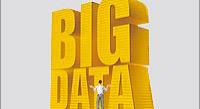ANALYTICS
SECTION ONE
SECTION TWO
Using Big Data to Engage with the New Consumer
Capturing the consumer’s attention in the past was relatively straightforward.
It was never truly easy, but consumers faced a much simpler set of decisions at
the shelf than they do today. There were also far fewer touch points guiding them along their paths.
Choice is a significant contributor to the growing fragmentation in the media market, as well as an unprecedented availability of consumer data. Consumers now have myriad platform, device, viewing occasion and product choices, and they’ve baked most of these choices into their everyday lives. This proliferation of choice, however, has created a spider-webbing of options for marketers to keep track of.
With so much to contend with, the marketers’ role has shifted from “communicator” to “consumer scientist” as four key forces will intensify going forward:
- Doing business in a tight economy is the new “business as usual.”
- Consumer diversification is increasing, which means that today’s consumer base looks different from yesterday’s.
- Media consumption is highly fragmented across devices, platforms, times and products.
- Big Data is everywhere.
So in a consumer landscape that’s becoming more complex every minute, success will hinge on a marketer’s ability to take advantage of two big opportunities: making Big Data work for them and finding new sources of growth.
Big Data: Problem or Solution?
In many ways, the preponderance of massive amounts of data can be a problem rather than a solution. Collecting and storing cumbersome terabytes of consumer data is expensive and time consuming.
If we spin the equation a bit, however, we can leverage big data as a solution: harness the massive and disparate data sets to produce cohesive, simple actionable insights that can be used in real time.
Nielsen Online Campaign Ratings and the Nielsen Twitter TV Rating are good examples of cutting-edge extracts from Big Data. Nielsen Online Campaign Ratings, for example, delivers overnight audience ratings by demographic consistent with TV gross rating point (GRP) measures by unlocking massive amounts of social media data combined with a high-quality multi-platform panel.
Winning with Big Data
So where will Big Data take the media and marketing industries? Down a road of justification. All players - advertisers, agencies, digital and traditional media players - will face pressure to accumulate and own massive data sets about their customers - and that data will set the tone for marketing strategies. By 2020, all ad buys will be supported by return on investment-like measures controlled by the seller and/or agency. So with that fate looming ahead, players will need to develop very deliberate data strategies with a full understanding of the costs and benefits associated with them.
For advertisers, the age of Big Data opens a world of opportunity. They’ll have the ability to forge direct-to-consumer relationships rather than work through retailers acting as middle men. Retailers, on the other hand, will face previously un-experienced price pressures for many categories as consumers effortlessly comparison shop in real time.
To win in this rapidly complexifying market, marketers will need to realize they can’t do it alone. Second, understanding online audiences and navigating the abundance of social networks will dramatically aid efforts to overcome fragmentation and create meaningful connections and loyal customers.
This essay was provided by Steve Hasker, President, Global Product Leadership, Nielsen.
Click on the LinkedIn logo to join the new Shopper Technology Institute Discussion Group
SECTION THREE

